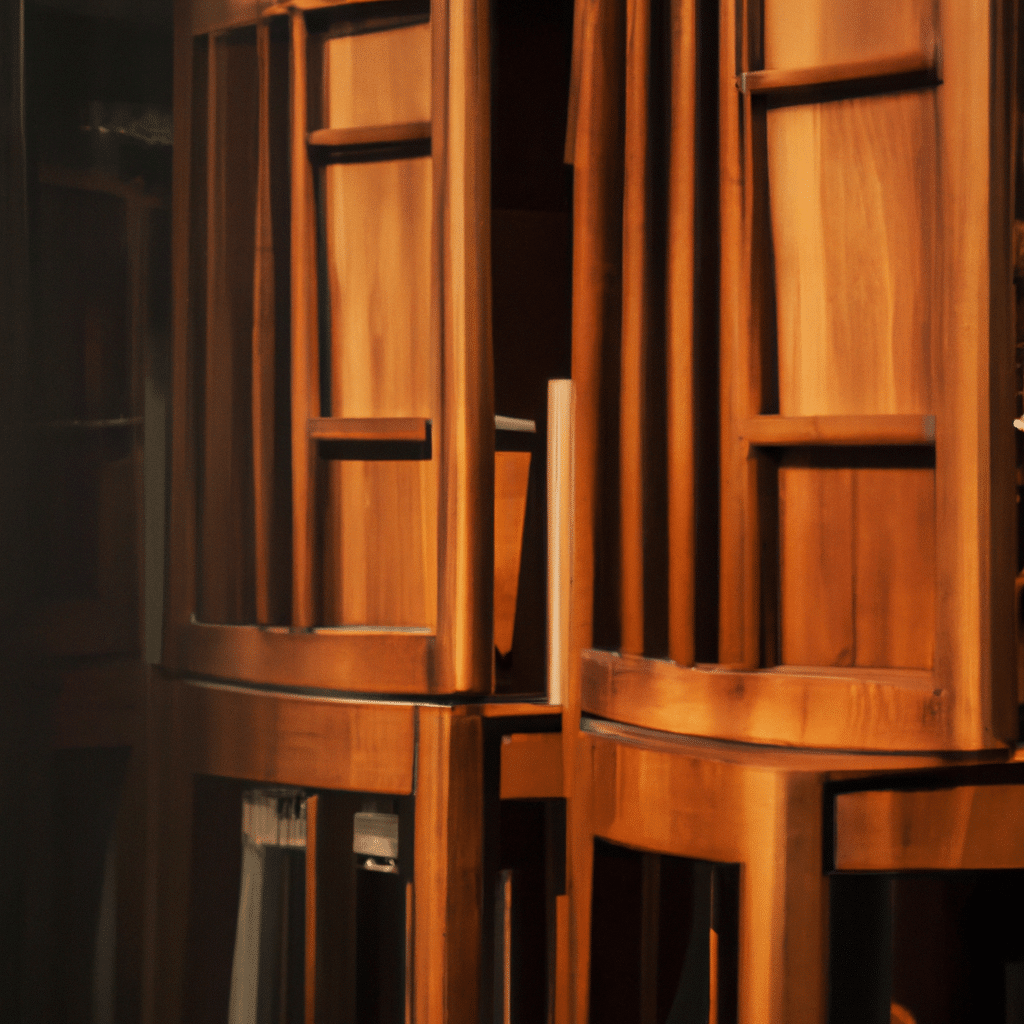Welcome to our comprehensive guide on the quest for perfection in furniture craftsmanship. In this article, we delve into the world of lesser-known wood species and explore how they can elevate the quality and durability of furniture. While popular wood choices like oak and mahogany have long dominated the industry, there is a hidden treasure trove of wood species that possess unique characteristics and exceptional performance. Join us as we embark on a journey to discover the untapped potential of these lesser-known woods.

The Allure of Lesser-Known Wood Species
When it comes to furniture, many people default to the familiar options such as oak, pine, or cherry. While these woods certainly have their merits, there is an entire realm of lesser-known wood species that offer distinct advantages. These hidden gems often possess qualities that make them ideal for specific furniture applications. By exploring these alternative options, we can unlock a world of possibilities and create furniture pieces that truly stand out.
Unveiling the Hidden Gems: Lesser-Known Wood Species
1. Blackwood: The Ebony Alternative
Blackwood, also known as African Blackwood, is a dark and dense wood species that rivals ebony in terms of aesthetic appeal. Its deep, rich color and fine grain make it a popular choice for high-end furniture and musical instruments. Blackwood’s natural oils provide exceptional resistance to moisture and rot, ensuring the longevity of furniture pieces made from this wood. Additionally, its durability and stability make it an excellent choice for intricate carvings and detailed craftsmanship.
2. Sapele: The Mahogany Alternative
Sapele, often referred to as African Mahogany, shares many similarities with its more well-known counterpart. With its reddish-brown hue and interlocked grain, Sapele exhibits a striking resemblance to mahogany. It possesses excellent dimensional stability, making it resistant to warping and shrinking. Sapele is highly sought after for its durability, making it a popular choice for furniture pieces that require strength and stability.
3. Teak: The Everlasting Beauty
Teak is a legendary wood species renowned for its exceptional durability and natural beauty. With its golden-brown color and high oil content, teak is resistant to rot, decay, and insect damage. This makes it a highly desirable choice for outdoor furniture that must withstand the elements. Teak’s natural oils also provide a stunning luster that adds a touch of elegance to any furniture piece. Its remarkable longevity and low-maintenance requirements have cemented teak’s status as a premium wood choice.
4. White Ash: The Versatile Workhorse
White Ash, often overshadowed by its close relative, oak, is a versatile wood species that deserves more recognition. With its light color and prominent grain patterns, White Ash offers a clean and contemporary look to furniture pieces. It possesses excellent shock resistance, making it an ideal choice for furniture that needs to withstand heavy use. Furthermore, White Ash’s workability and ability to hold stains and finishes make it a favorite among craftsmen seeking versatility and customization options.
5. Walnut: The Timeless Classic
While not entirely lesser-known, walnut still deserves a mention due to its timeless beauty and unmatched durability. With its rich chocolate-brown color and swirling grain patterns, walnut exudes elegance and sophistication. This wood species possesses excellent strength and stability, making it suitable for both structural and decorative furniture components. Walnut’s natural resistance to decay and pest infestation ensures that furniture pieces made from this wood will stand the test of time.
6. Bamboo: The Sustainable Alternative
In recent years, bamboo has gained popularity as a sustainable alternative to traditional wood species. With its rapid growth and replenishment rate, bamboo is considered one of the most eco-friendly choices for furniture production. Despite its lightweight nature, bamboo exhibits impressive strength and durability. Its distinctive grain patterns and light color add a unique touch to furniture pieces, making them stand out from the crowd.
7. Purpleheart: The Exotic Beauty
Purpleheart is a captivating wood species known for its vibrant purple color that deepens over time. This exotic wood possesses exceptional hardness and durability, making it highly resistant to wear and tear. Its distinctive hue and unique grain patterns make it a favorite among artisans looking to create eye-catching furniture pieces. Purpleheart’s natural resistance to decay and rot further enhances its appeal, ensuring that furniture made from this wood will age gracefully.
The Benefits of Choosing Lesser-Known Wood Species
By opting for lesser-known wood species, you can unlock a plethora of benefits that elevate the quality and durability of furniture:
- Unique Aesthetic Appeal: Lesser-known wood species offer distinctive colors, grain patterns, and textures, allowing you to create one-of-a-kind furniture pieces that stand out from the crowd.
- Enhanced Durability: Many lesser-known woods possess natural properties that make them highly resistant to moisture, rot, decay, and pest infestation. This ensures that your furniture will maintain its structural integrity and beauty for years to come.
- Versatility and Customization: Each wood species has its own unique characteristics, allowing for endless possibilities in terms of design and customization. Whether you prefer a contemporary or traditional look, there is a lesser-known wood species that can bring your vision to life.
- Environmental Sustainability: Opting for sustainable wood species like bamboo contributes to the conservation of forests and promotes eco-friendly practices in the furniture industry.
Conclusion
In the quest for perfection in furniture craftsmanship, exploring lesser-known wood species opens up a world of possibilities. From the exotic allure of Purpleheart to the timeless elegance of walnut, these hidden gems offer unique characteristics that can elevate the quality and durability of furniture. By embracing these alternative options, we can create furniture pieces that not only stand out visually but also withstand the test of time. So, dare to venture beyond the familiar and embark on a journey to discover the untapped potential of lesser-known wood species.








